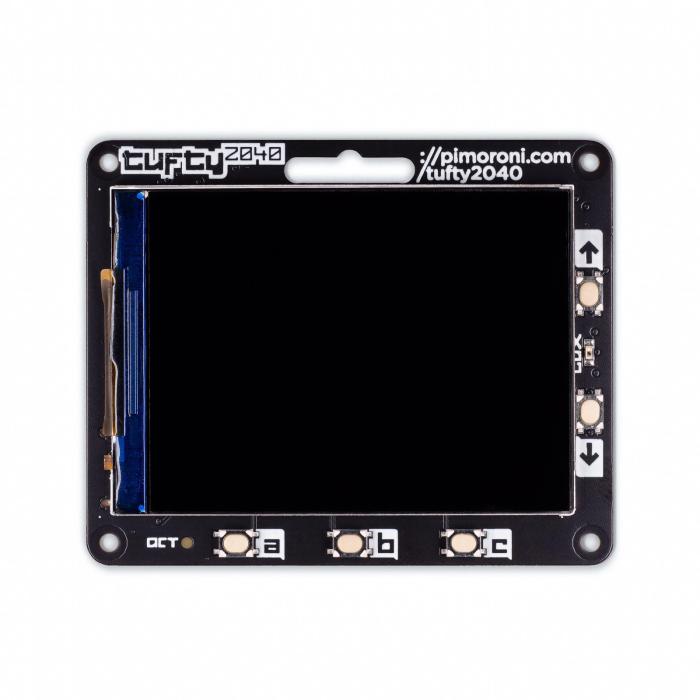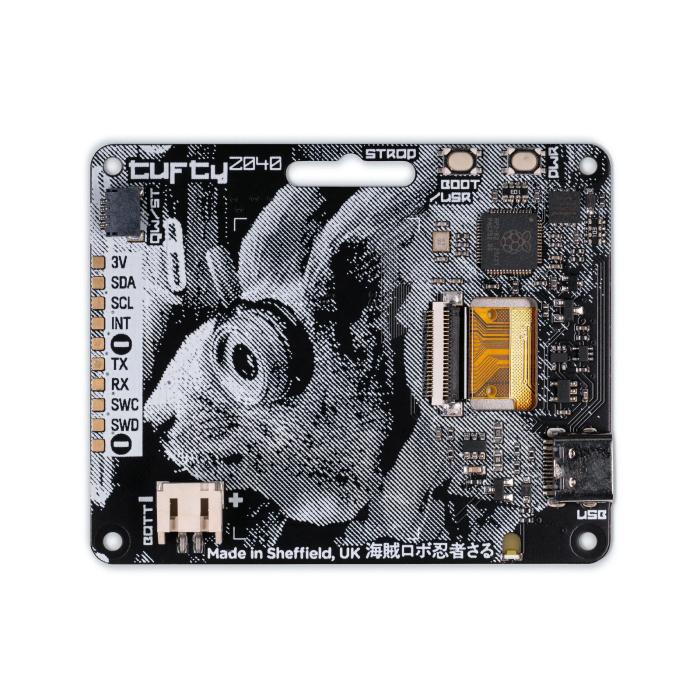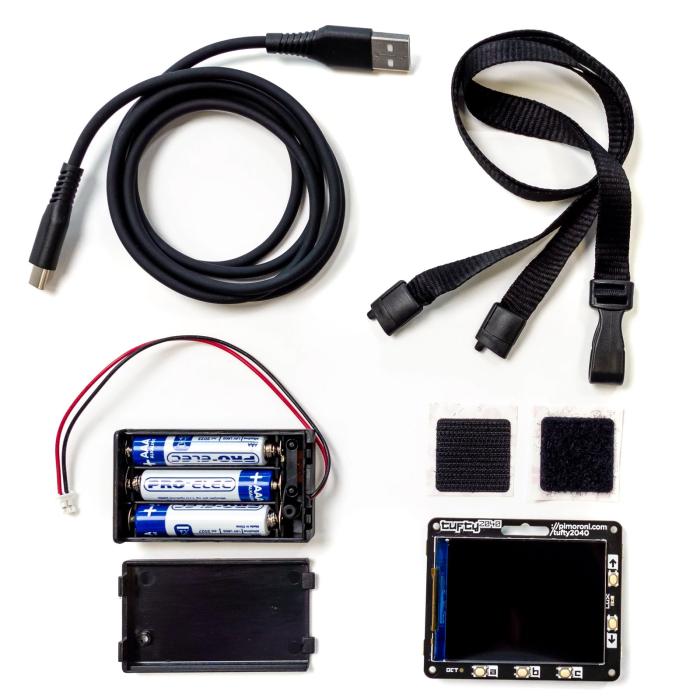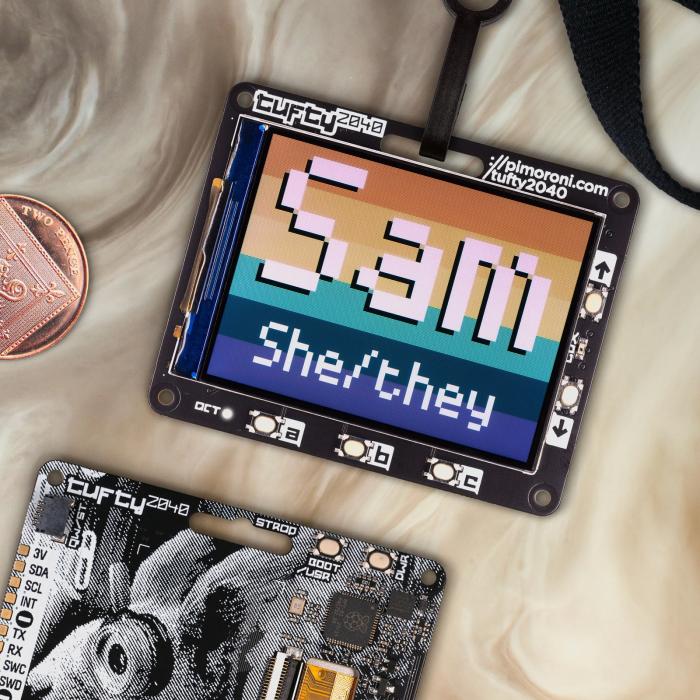Product description
Tufty 2040 is a hackable, programmable badge featuring a 2.4" colour display (320 × 240 pixels), powered by the Raspberry Pi RP2040 microcontroller.
Created in response to requests for an LCD version of Badger 2040, Tufty combines an RP2040 with a crisp IPS display – perfect as a digital name badge for tech conferences, underwater research labs, or space station bars. But it's more than just a badge – use it as a display for sensor data, a digital art frame, or a platform for simple games.
Tufty comes with five front-facing buttons, a lanyard slot, and a phototransistor for automatic brightness adjustment. On the back you'll find a majestic cyberpunk squirrel, a wide-range battery connector (3–5.5 V), power and boot buttons, and a Qw/ST port for connecting I2C breakouts.
Available as a standalone board or in an accessory kit including a lanyard, USB cable, and 3 × AAA battery holder.
Specifications:
- 2.4" colour IPS LCD (320 × 240 px)
- Driver IC: ST7789v (parallel interface)
- PWM-adjustable backlight
- RP2040 (dual-core Cortex M0+ @ 133 MHz, 264 kB SRAM)
- 8 MB QSPI Flash with XiP support
- Phototransistor for ambient light sensing
- 5 front user buttons + boot/power buttons (boot also usable as user input)
- White LED
- USB-C for power and programming
- JST-PH battery connector (3 V – 5.5 V)
- High-precision voltage reference for battery monitoring
- Qw/ST connector (Qwiic/STEMMA QT compatible)
- Fully assembled – no soldering required
Included in Tufty + Accessory Kit:
- Tufty 2040
- 3 × AAA battery holder
- 3 × AAA batteries
- Hook-and-loop fastener
- Black lanyard (made from recycled plastic bottles)
- USB-C to USB-A cable
Software:
Tufty can be programmed using C++ or MicroPython. C++ offers the best performance, but beginners will appreciate the preloaded MicroPython firmware with included examples. The PicoGraphics library supports JPEG rendering, QR codes, polygons, sprite sheets, and custom colour palettes for RAM efficiency.
Qw/ST Connector:
The Qw/ST port makes it easy to connect Qwiic or STEMMA QT breakouts using a JST-SH to JST-SH cable. For Breakout Garden modules without Qw/ST, use a Qw/ST to Breakout Garden adapter – also available in a multi-breakout configuration.
Dimensions:
- 65.2 × 52.7 × 9.6 mm (L × W × H including connectors)
- M2 mounting holes, 2.9 mm from each edge, 3 mm corner radius
Power Supply:
- Recommended: 3 × AAA battery pack (fits neatly behind Tufty)
- 2 × AAA only works reliably with non-rechargeable batteries (NiMH ≈ 2.4 V is too low)
- Power consumption: ~80 mA for display, ~20 mA for RP2040 (≈100 mA total)
- Power button for easy shutdown to save battery
Using LiPo batteries:
- Only for adult users familiar with LiPo safety
- Use only LiPo batteries with built-in protection (all Pimoroni batteries include this)
- No onboard charging – use an external charger like the LiPo Amigo
- Use a case or backplate to protect the battery during wear
Note: Sciurus Cybernetics staff should be cautious when eating their last nut to avoid a kernel panic.




